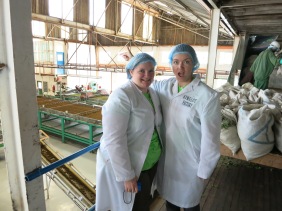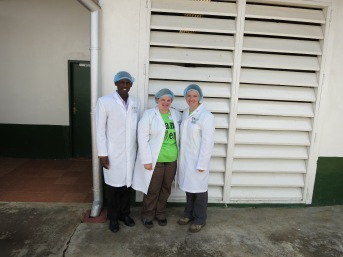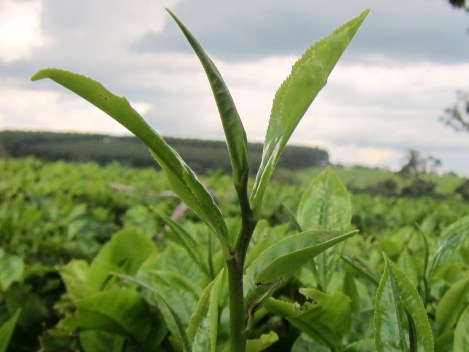We’re on the downhill for posts from my time (now over, sadly) in Kenya as a Kiva Fellow, friends. I think there are three more stories you’ll enjoy: this one, about tea; the next one, about the amazing horse safari in Chyulu Hills; and the last, which I’m temporarily calling, “What do I have to do to get you to make a loan on Kiva?”
This post is all about tea. Specifically, how the tea in this field:
Becomes the tea in this glass:

My friend Kelly and I, being Texans, love tea and were unduly excited to visit a tea factory. My undergraduate degree is in agricultural systems management and I’ve had just enough classes in food processing to really appreciate the magic that happens between the field and the table. In business, the magic is called “value-added” and is part of the “agricultural value chain” but as long as you and I aren’t conducting business, I prefer calling it magic.
On my previous visit to Kericho, I stayed at Teavale Guest Cottages and met the owners on the last day. They kindly arranged a visit to Finlay’s Estate, just next door to Lipton. Kelly and I were pretty excited to go, and we were happy to be accompanied by our friend Michael, who works at Teavale.
For those of you who want the short version of our visit:
Tea leaves are: dried; chopped; chopped; chopped; fermented; dried; sorted, bagged for shipment.
That was boring, wasn’t it? That’s why you should take the tour with a curious mind!
The tea comes in from two different places, the fields owned and harvested by the company, and people who have their own farms, the outgrowers.
Interesting side note: Kenya, as you may recall, was a colony of Britain for a while. When tea was introduced at the early part of the 20th century, tea was only allowed to be grown on estates and it wasn’t until independence in 1963 that regular farmers could grow tea on their own plot of land. Now, about 60% of tea in Kenya is produced by smallholder farmers.
After the tea comes into the factory, workers spread the tea into movable trays, where the leaves rest for nearly a day.
Once the leaves have wilted a few percentage points in moisture, they are moved to the first of a series of choppers. I won’t bore you with all the details, but the takeaway is that the leaves are chopped more and more finely and then spend a few hours in a fermenter before going to the final drying stage. As the leaves are chopped, they oxidize (fancy word for changing as a reaction to oxygen exposure) and go from vivid green to the more familiar brown. You can see the change in size and color in the photos below.
In the dryers, the tea is blasted with hot air and then sent electrostatically to the next stage, where it is gravity-fed through the size-sorter and then bagged to go to the port of Mombasa for export.
At each stage, the tea is tested for quality by sight, smell and test.
With respect for your likely limited time, I’ve completely simplified this whole process and our visit. I didn’t tell you about how Eucalyptus trees (an invasive species with bad effects on the local water table) is used to fire the dryers or how they are grown in stands next to the tea fields. We didn’t touch on the farmers I met growing tea or how only the top two leaves and a bud are plucked from the plants. We didn’t even talk about how many years a tea plant (a relative of our perennial Southern favorite, the camellia) can go before needing to be replanted. And, we also didn’t discuss how the workers in my photo above get paid about as much as the really good tea pickers, for much more reliable and less strenuous work. Oh, and the tea producer co-operatives and guaranteed medical care on the estates! In tea drinking terms, we’ve only just begun to boil the water, friends! I’ve digressed from the tea factory, but just know that there is so much more to tea production.
I hope next time you enjoy a “cuppa” or a “cold glass” that you’ll take just a second to appreciate the magic you’re enjoying!














